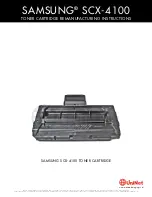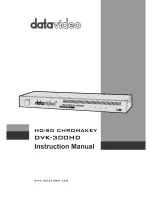
TurbiTechw² LR Instruction Manual
9 Calibration
When a new system is installed, a period of 1/2 hour should be allowed for the TurbiTechw² Sensor to
stabilise before calibration commences. This is to enable the system to adjust to the “new” ambient
conditions. This should not be considered as system warm up time from power up, but to acclimatise to the
environment if the sensor has come from a warm store to a cold sample point.
The standard calibration procedure involves a two point calibration – zero and span, the process for
calibration is described below. The sensors have linear responses to most the solids found in most
applications, if a particular application has a non-linear response it is possible to adapt the response of the
sensor to improve accuracy, this must be carried out in consultation with Partech.
Any containers used to store calibration samples should be cleaned prior to use. This is particularly important
when performing the zero point calibration.
The most accurate method of calibration is using a primary standard, i.e. formazine solution. This procedure
has associated health risks, therefore Partech supply a dry secondary standard with each flowcell. These
standards have been given a calibrated value that is equivalent to formazine in NTU. Under normal
circumstances and the correct storage these standards will last the life time of the instrument. Is is important
they are kept dry and free from scratches on the optical surfaces. The choice of method will depend on the
requirements of the application and will be guided by regulatory requirements. Most regulators will require
the use of formazine as the primary calibration tool, with the dry calibration reference being used as a
performance check.
Note: The secondary dry standard is ALWAYS used to calibrate zero.
If further guidance is required please contact our Technical Support Engineers to discuss your requirements.
9.1 Calibration Frequency
There is no absolute guide to the frequency of calibration. The user must make a judgement based on how
critical the measurement is to the process, variability in the sample and standard practice within their
organisation.
We recommend that calibration is carried out at commissioning stage and is then repeated within 4
weeks to ensure the instrument and process conditions are stable. After this a default calibration
frequency is every 3 to 6 months.
9.2 Equipment required for Formazine Calibrations
This section describes the materials and equipment you will need, and the basic steps required to
ensure a successful calibration of the TurbiTechw² Sensor. Regardless of the calibration method, the
secondary dry standard is always used to calibrate zero.
The following is required:
•
1 Litres standard (Formazine)
•
Dry secondary standard
225769IM - Issue - 05 Issue Date 30/04/2019
Page 21 of 34
Range
Calibration
Path
Zero
Calibration
Path














































